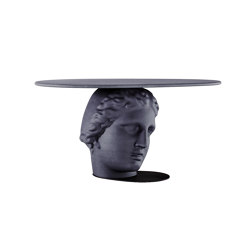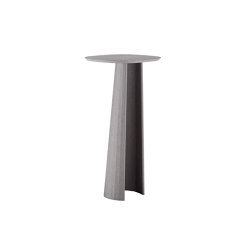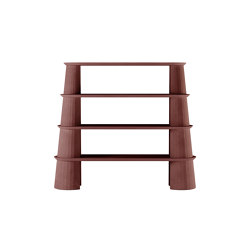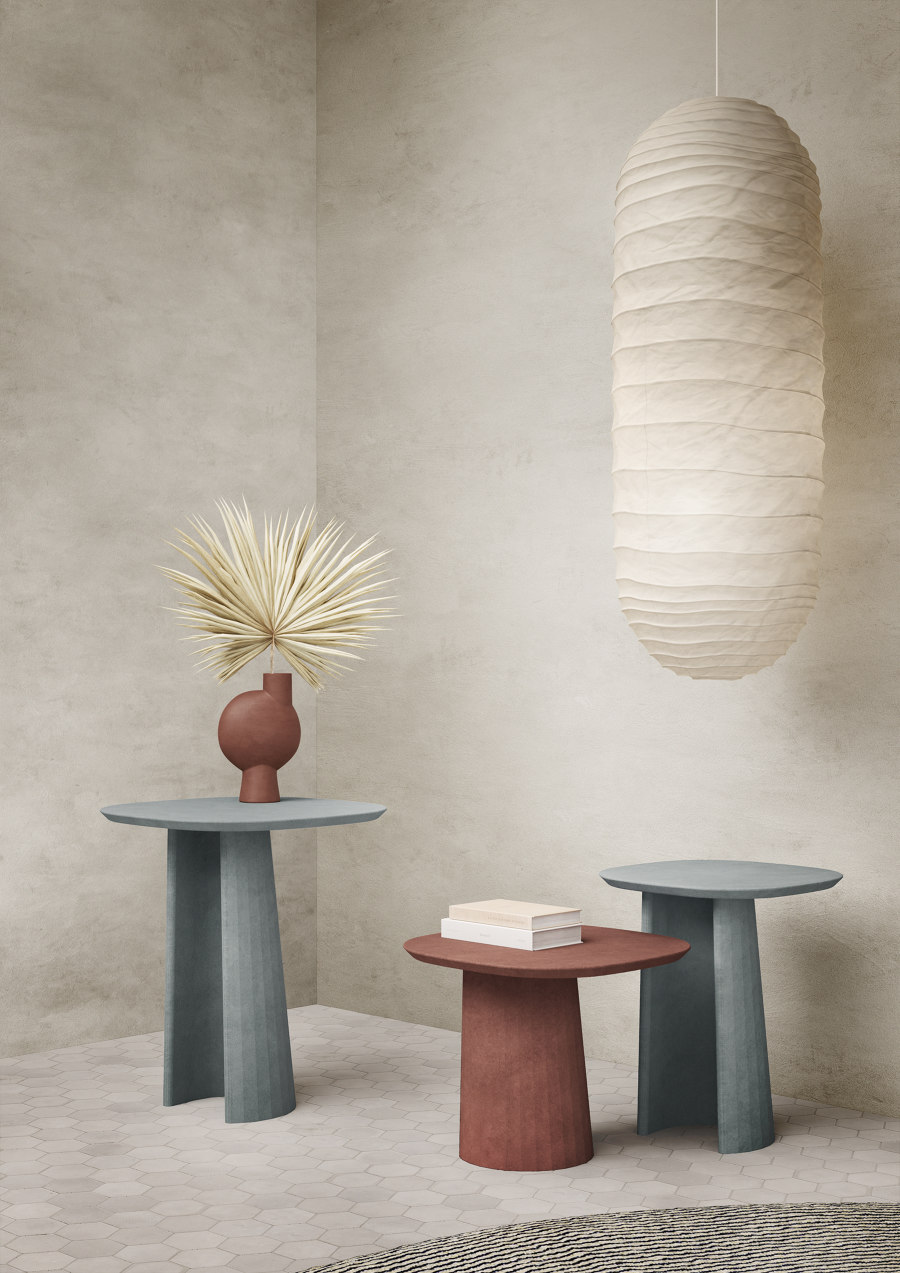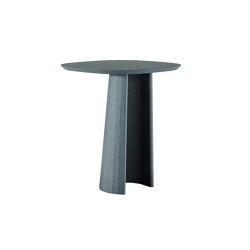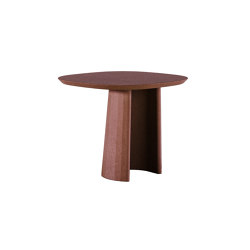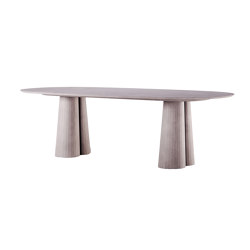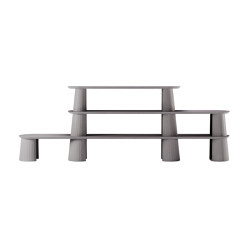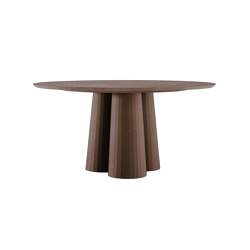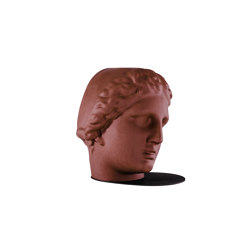A concrete landscape for the modern home: Fusto by Forma&Cemento
Storia del Marchio di Mark C. O'Flaherty
Rome, Italia
29.11.23
While drawing inspiration from classical architecture, Forma&Cemento’s Fusto collection celebrates versatility, brutalism and the endless variations of concrete, creating a new domestic landscape of expressive forms, textures and colours.
The Fusto collection reworks column shapes at numerous scales to support surfaces
Concrete makes a strong modernist statement but often with overwhelming connotations: the austere courtyards and interiors of Tadao Ando, and the grids and domes of Le Corbusier and Niemeyer among them. All are grand designs, but purposely dominate the open spaces they inhabit. The term ‘gentle brutalism’ should be an oxymoron, but it’s perfectly descriptive of the Fusto collection, designed by Marialaura Irvine of Studio Irvine – who has been Forma&Cemento’s Art Director since 2020 – for the brand’s concrete furniture line.
Concrete is evocative of countless bold architectural masterpieces, so it’s an inspired concept to repurpose it for subtle and softly shaped interior objects – or indeed a ‘concrete domestic landscape’ – within the brand’s collection of tables and shelving based around tapered columns. ‘This collection marked the definitive start of a new decorative language for us,’ says Giorgio La Corte, CEO and Founder of Forma&Cemento. ‘We were aiming to overcome the conceptual barriers traditionally linking concrete to the brutalist and minimalist context. Our style is a modern reworking, with classical and metaphysical references.’ Such philosophy is captured and brought to life through designer Marialaura’s visionary approach to the brand.
Bookshelves take on a sculptural form within the Fusto collection of hand-crafted concrete objects. Photo: Serena Eller
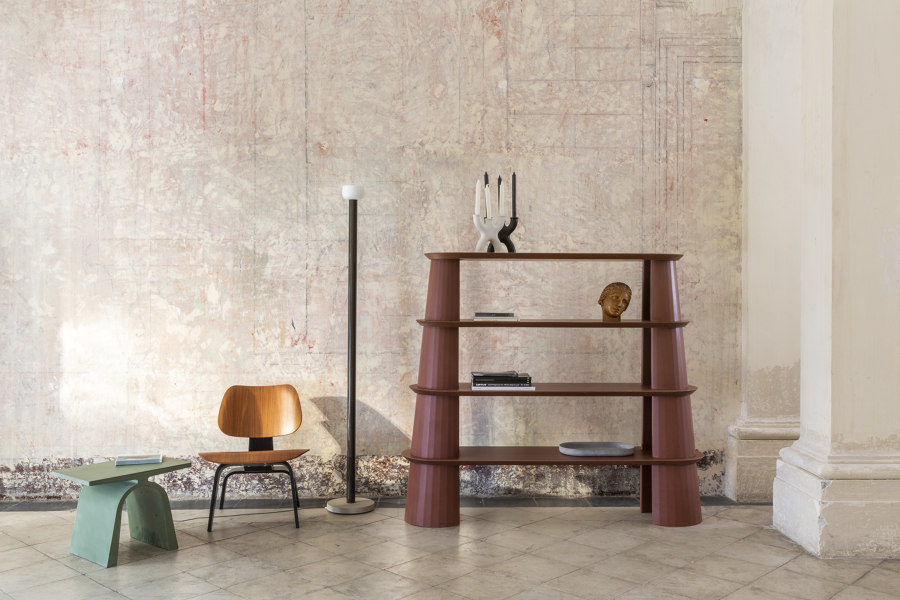
Bookshelves take on a sculptural form within the Fusto collection of hand-crafted concrete objects. Photo: Serena Eller
×Roman heritage in contemporary form
While Ando has been a reference for other designs created by the Rome-based company – most notably the minimalist Tadao range of concrete tables – Giorgio La Corte cites the more decorative concrete work of Italian post-war architects and engineers as the biggest influence on his work, mentioning Giuseppe Perugini, Morandi and Pierluigi Nervi as key inspirations. The location of Forma&Cemento is also key to what shaped Fusto. You can see abstracted facets of classic Roman Doric columns, skewed and refreshed, in the supports of the tables and bookshelves.
‘Our style is a modern reworking, with classical and metaphysical references’
‘We are fortunate to use the same materials as the ancient Romans,’ says Giorgio La Corte. ‘Tiber River sand is always part of our mixture – it’s a modern material with a strong legacy from the past. And we tend toward a completely closed process: the waste from one production becomes the material for another type of product, and because all the raw materials we use are local, we reduce CO2 impact by minimising transportation.’
From occasional low tables to dining tables, Fusto incorporates a unique colour palette that’s never a predictable grey. Photo below: Serena Eller
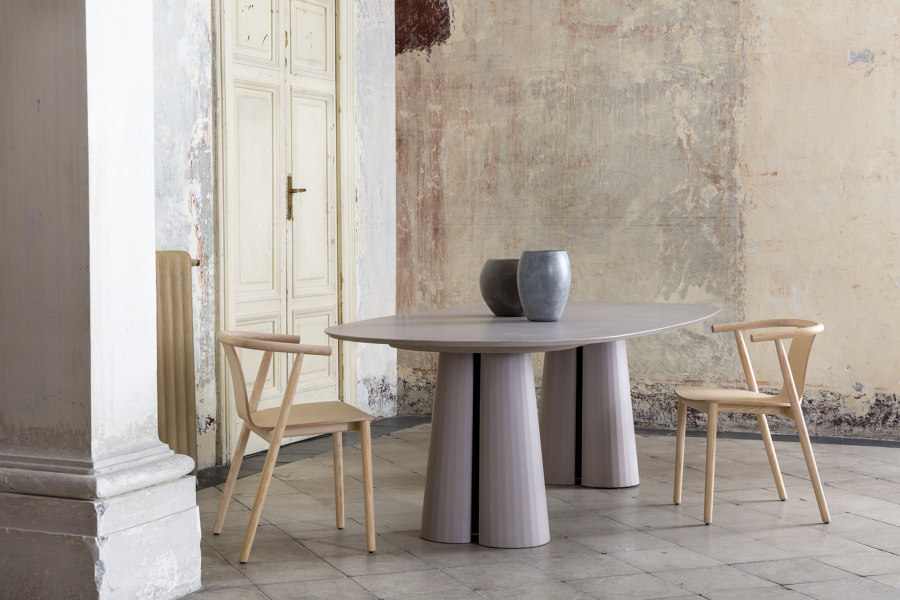
From occasional low tables to dining tables, Fusto incorporates a unique colour palette that’s never a predictable grey. Photo below: Serena Eller
×Crafted for longevity
The facets on the shell of each column are a result of practicality as well as a call-back to history. ‘Each is hollow, achieved through casting of the material,’ says Marialaura. ‘The column can then be sectioned or cast to varying heights required to create the legs for different furniture types: tables, coffee tables, consoles, bookshelves, pedestals and more. This production process encourages the company towards the act of recycling. The facets on the shell create a play of shadows and brightness that bring the mono-material to life. Fusto thus creates a soft yet sculptural landscape.’
The sense of permanence you get from concrete isn’t just an illusion
The debates about the sustainable aspects of concrete as a material for interior design are complex. While its production has inherent issues relating to CO2, the end product lasts indefinitely. As Giorgio La Corte says: ‘Just as the environmental impact of a glass is not called into question because its longevity compensates for the production phase's impact over its foreseeable lifespan, the same applies to our products.’ Those Fusto fluted console tables and bookshelves on stems will last for generations. The sense of permanence you get from concrete isn’t just an illusion.
The curves of each column create hollow space, bringing lightness as well as elegance to each design. Photo below: Serena Eller
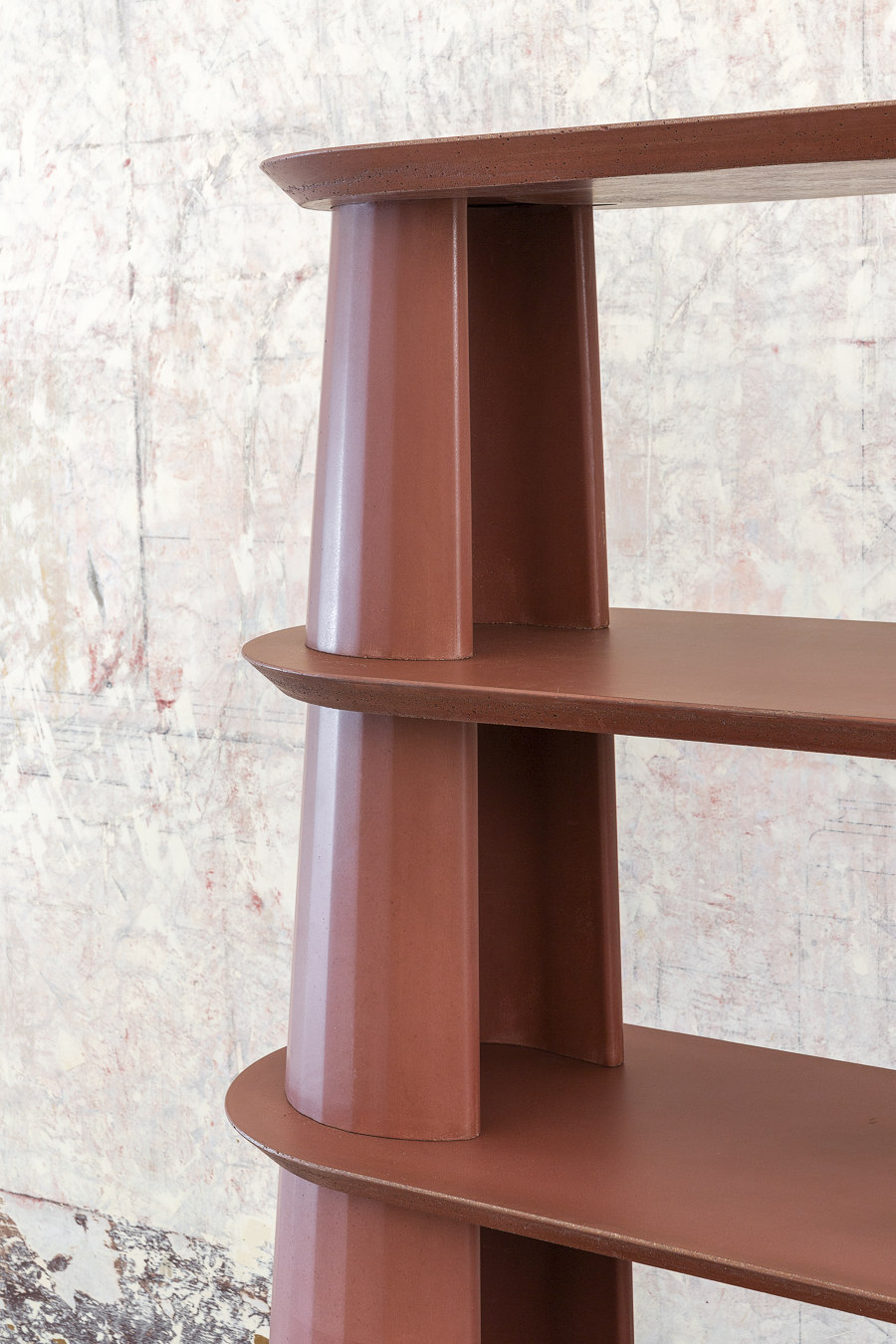
The curves of each column create hollow space, bringing lightness as well as elegance to each design. Photo below: Serena Eller
×Artisanal essence
What’s most remarkable about the concrete materials of Fusto is the refinement. The colours are striking. Unlike so many modernist buildings which have taken on a patina of time that places them in a utopian past which never quite happened, these design objects ‘normalise’ concrete. ‘The material allows us to play infinitely,’ says Giorgio La Corte. ‘For us, it isn't merely a decorative element; it always forms the objects’ structure. This characteristic distinguishes our products from others that imitate just the aesthetic of concrete.’
While being practical and contemporary, the collection references the ancient roots of concrete production in Rome. Photo: Serena Eller
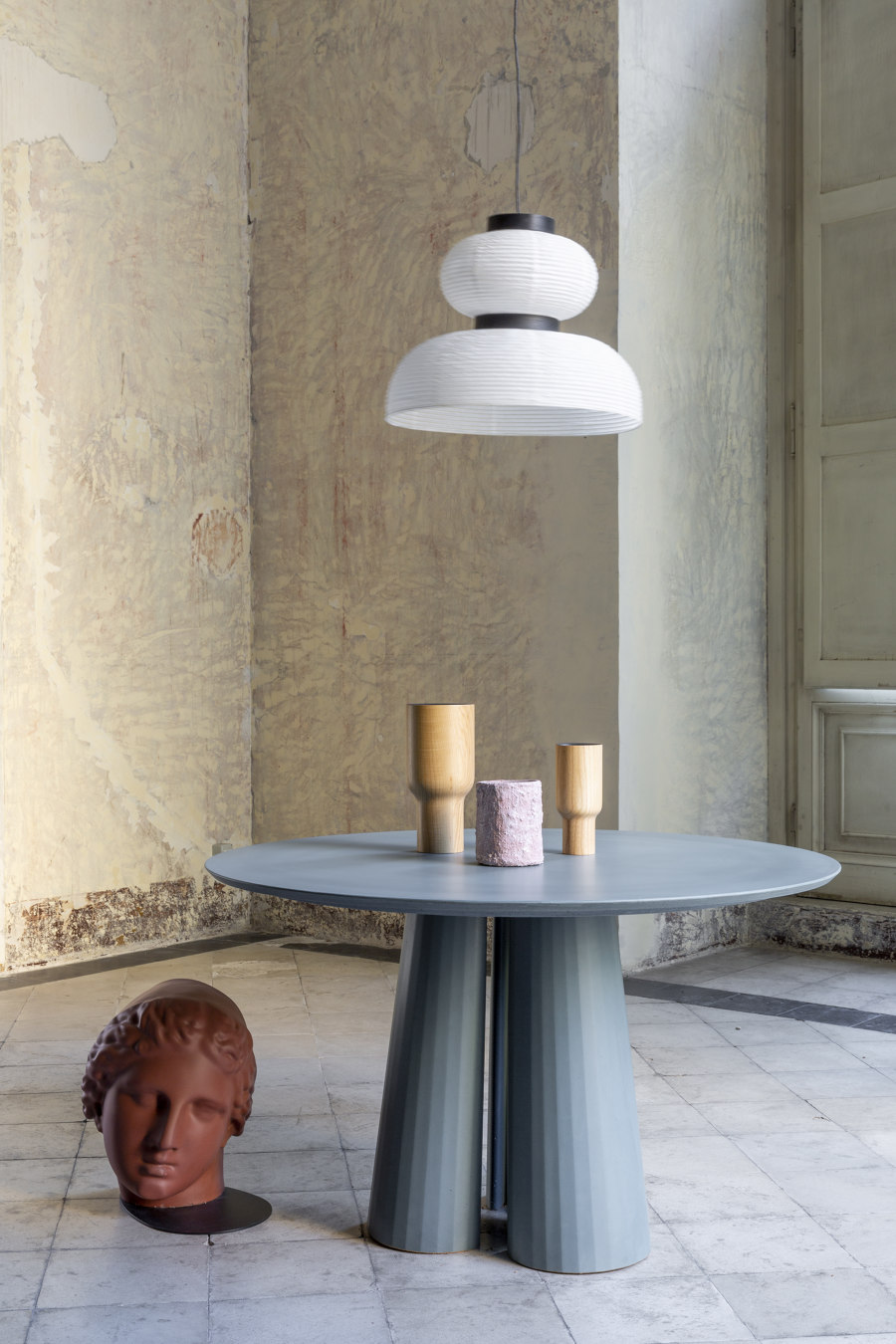
While being practical and contemporary, the collection references the ancient roots of concrete production in Rome. Photo: Serena Eller
×Concrete is seen as one of the most industrial of materials, but with Fusto, each component is cast and treated by hand. It is literally ‘made in Italy’, in the most romantic sense. The colour of each piece is achieved by natural oxides, and there are subtle differences between every object made. Giorgio La Corte says that results often ‘surprise us in ways that are unforeseeable’. Their production line has a consistent narrative, but the accent is constantly subtly changing.
Marialaura sees those accents as ‘a whisper, not a shout’, which is why the Fusto range harmonises with so many diverse interiors. ‘I have seen the round table version in a hotel in Ischia and on a successful television program,’ she says, ‘and the asymmetric bookcase in the living room of a house in Milan, the rectangular table version in an outdoor garden in Capri and the console version in a New York penthouse. It's an eclectic collection that adapts to the client's needs while remaining true to its fundamental concept: to possess a soft personality that tells the true essence of the material.’
© Architonic
Head to the Architonic Magazine for more insights on the latest products, trends and practices in architecture and design.




